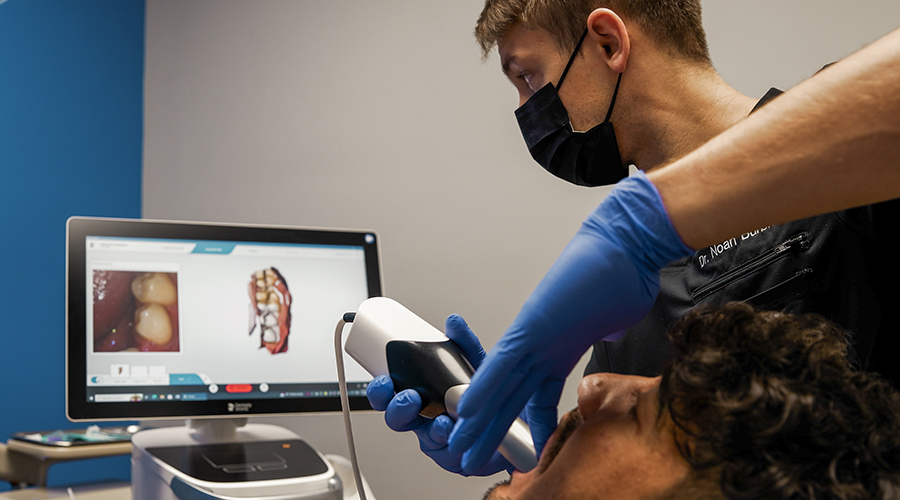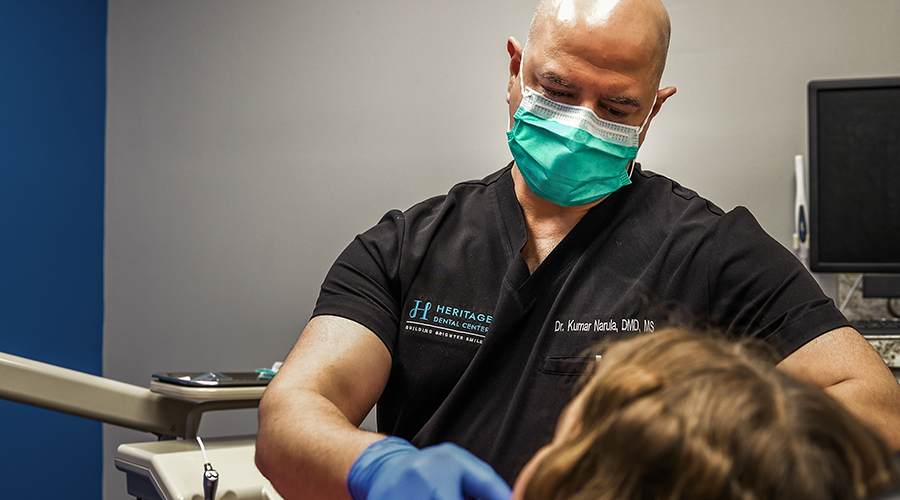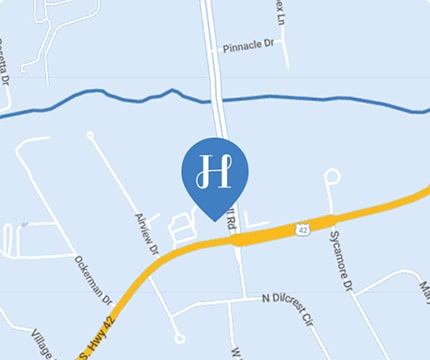
Smile Restoration Experts Northern KY Dental Bone Graft Specialist
Heritage Dental Center is the leading dental bone graft specialist in Northern Kentucky. Our specialists offer advanced dental bone grafting solutions to restore your smile. Whether you need dental bone graft surgery or a dental bone transplant, our expert team provides personalized care. Using state-of-the-art techniques, we provide optimal results for your oral health and functionality. Schedule a consultation today.

4 Convenient Locations for Dental Bone Grafts in Northern Kentucky

Common Reasons for Dental Bone Grafts
A dental bone graft specialist restores jawbone structure lost due to tooth loss, injury or resorption, enabling successful dental implants and other treatments. Here are common reasons a dental bone graft is needed:
- Tooth Loss: When teeth are lost due to decay, injury or disease, a bone graft may be needed to restore the bone structure and support dental implants.
- Preparing for Dental Implants: If there is insufficient bone density in the jaw, a dental bone graft can help build up the bone before placing implants.
- Severe Gum Disease: Advanced periodontal disease can lead to bone loss in the jaw, requiring a bone graft to restore the area before other treatments.
- Trauma or Injury: Accidents or injuries that cause damage to the jawbone often require a bone graft to restore the missing bone.
- Jawbone Shrinkage: Over time, bone in the jaw can shrink due to missing teeth or poor oral health. A bone graft can rebuild this lost bone and improve facial appearance.
- Sinus Lift Surgery: In cases where the upper jaw does not have enough bone for implants, a bone graft may be required to lift the sinus and provide enough bone for the placement of implants.
- Bone Resorption: After tooth extraction, the surrounding bone can begin to resorb. A dental bone graft specialist can perform bone grafting to prevent further bone loss and maintain the jaw’s structure.
- Improving Aesthetic Appearance: For patients who are concerned about the aesthetics of their smile, bone grafts can give a more natural and balanced appearance following tooth loss or bone degeneration.
Types of Dental Bone Grafts
- Autograft: Bone taken from the patient's own body, typically from the chin, jaw or hip, to restore the missing bone.
- Allograft: Donor bone from a cadaver, processed and sterilized for use in bone grafting.
- Xenograft: Bone taken from animals, usually cows or pigs and processed for human use.
- Alloplast: Synthetic bone materials or bone substitutes used to encourage natural bone growth.
- Sinus Lift: A procedure to raise the sinus floor and add bone graft material to the upper jaw for implant placement.
- Ridge Augmentation: Grafting material is added to areas where the jawbone has shrunk, typically after tooth loss.
- Socket Preservation: Bone grafting immediately after tooth extraction to preserve the bone for future implants.
Are Retainers Necessary?
Yes, retainers are necessary after orthodontic treatment to keep your teeth in their new positions. Without them, teeth can gradually shift back to their original misalignment, potentially undoing the progress made during braces or aligner treatment. Wearing a retainer as directed by your orthodontist helps maintain the results of your treatment.
Who Is a Good Candidate for a Dental Bone Graft
- Individuals with Missing Teeth: Especially those who plan to get dental implants.
- People with Jawbone Loss: Due to tooth extraction, gum disease or injury.
- Patients with Insufficient Bone Density: Not enough bone to support implants.
- Those Needing Sinus Lift or Ridge Augmentation: For improved implant placement.
- Patients with Gum Disease: That has led to bone damage.


Dental Bone Graft Specialists in Northern Kentucky
Dental bone grafting is often recommended when there is insufficient jawbone to support implants or other treatments. This procedure helps restore bone structure and prevent further complications. Early intervention can prevent serious issues and promote a quicker recovery.
Important Things to Know About Recovery
- Healing Time: Full recovery can take several months, as the bone needs time to integrate with the graft.
- Pain Management: Mild discomfort is normal; your dentist may prescribe pain relievers.
- Post-Op Care: Follow your dentist's instructions on oral hygiene and diet to avoid infection.
- Avoid Smoking: Smoking can delay healing and increase the risk of complications.
- Regular Check-Ups: Follow-up appointments are essential to monitor healing progress.
- Possible Swelling: Some swelling and bruising are common, but should subside within a few days.
What to Expect During Dental Bone Graft Treatment
Dental bone graft treatment is a key procedure for restoring jawbone structure, often required before dental implants or other restorative treatments. Here's what to expect during the process:
- Consultation and Evaluation: The specialist will assess your oral health, discuss your medical history and take X-rays to determine the need for a bone graft.
- Anesthesia: Local anesthesia or sedation will be administered. Our goal is to provide a comfortable and pain-free procedure.
- Bone Graft Placement: The specialist will place the bone graft material in the area where the bone is needed, such as the jaw or extraction site.
- Stitching and Closure: Once the graft is in place, the area will be stitched closed and the surgical site will be carefully secured.
- Post-Op Care: After the procedure, you’ll receive instructions on recovery, including pain management, oral hygiene and follow-up appointments.
Dental BoneGraft FAQ
What materials are used in dental bone grafts?
Grafts can be made from autografts (your own bone), allografts (donor bone), xenografts (animal bone) or synthetic materials, depending on your needs and graft location.
How long does it take for a dental bone graft to heal fully?
Healing typically takes 3 to 12 months, depending on graft size, health and location.
Are there risks associated with dental bone grafts?
Rare risks include infection, graft failure, nerve damage or reactions to the material, which your dentist will discuss beforehand.
Can I get dental implants immediately after a bone graft?
Implants may be placed shortly after if healing permits, but usually, a healing period of several months is required.
What can I do to promote the success of my dental bone graft?
Follow post-op care instructions, avoid smoking, maintain a healthy diet and attend follow-up appointments to monitor healing.
5-Star Northern KY Dental Bone Graft Specialist
Join our satisfied patients!

Plan Your Visit
New Patients Welcome!
Experience exceptional dental care at one of our 4 Northern Kentucky locations. We warmly welcome new patients into our practice! Contact us today.


